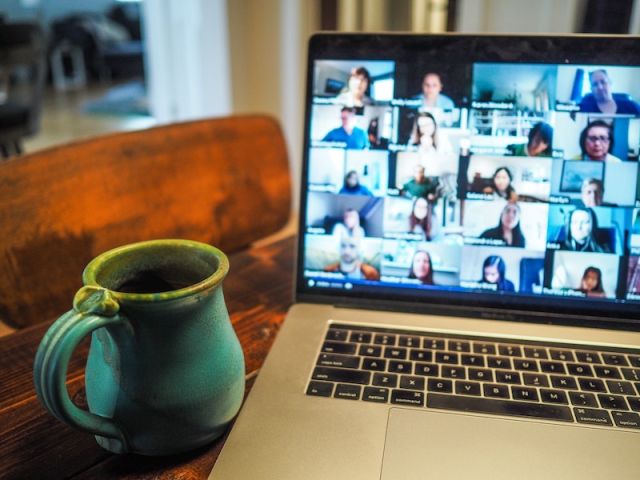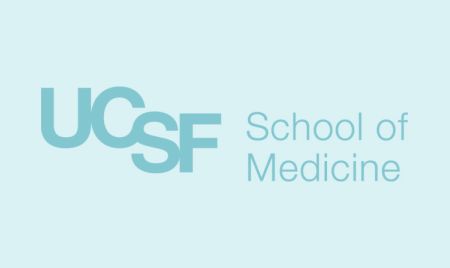Lessons Learned from Humanizing the Remote Learning Environment

The Technology Enhanced Education team acted quickly to help the School of Medicine pivot to virtual learning at the beginning of the COVID-19 pandemic. (Photo by Chris Montgomery via Unsplash)
March marks two years since concern about a global pandemic raced around the world. When the COVID-19 pandemic hit in March 2020, learning had to suddenly transition to remote and virtual sessions. The School of Medicine migrated the Bridges Curriculum, including lectures, labs, and clinical learning experiences, to remote learning within six weeks. On the anniversary of the pivot to online learning, we reflect on the innovations that came from two years of working to humanize the remote learning experience and how the School of Medicine is leveraging the lessons learned to continue to improve the student learning experience.
Rapid Response
The Technology Enhanced Education (TEE) team partnered with faculty, students, and staff to find innovative ways to use technology to include and engage learners, and foster connections during a period of change and stress. The focus was on humanizing the remote learning experience to foster a welcoming, inclusive environment where learners were engaged and felt safe taking risks.
TEE quickly sourced best practices and tools, spoke with experts, and relied on student feedback to translate UCSF’s education environment to a remote learning experience. Much of the effort to transition to online learning was guided by the Virtual Learning Environment (VLE) taskforce, led by Justin Sewell, MD, PhD, MPH, Professor of Medicine, Michelle Hermiston, MD, PhD, Associate Professor of Pediatrics, Liz Austin, MAT, Manager, Foundational Sciences Curriculum, and Christian Burke, TEE, Director of Technology Innovations. The taskforce was made up of faculty, students, and staff who met regularly to develop best practices that were shared with all course directors.
TEE met with each course director in Foundations 1 for a remote learning kick-off session to discuss Zoom essentials and remote engagement and collaboration strategies before their block went live. In addition to one-on-one consultations, TEE conducted workshops on facilitating small group sessions and lectures remotely. TEE also created a new weekly series of workshops to train faculty, students, and staff on better ways to use existing technologies and tools and how to humanize and improve the remote learning environment.
During the first year of the pandemic, TEE increased the number of workshops they offered by tenfold to meet demand. More than 400 members of the medical education community completed newly created workshops on topics ranging from “Zoom Essentials” to “Small Group Engagement and Equity” and “Collaborating Virtually.”
A Balance of Technology and Humanity
To create a secure and consistent experience for students, the School of Medicine embraced Zoom as a solution and created 70 virtual classrooms to be shared across Foundations 1. In addition to safety and consistency, it was critical to make improvements to accessibility to engage all learners. One key improvement was the addition of Otter.ai to lectures, which allowed students to view live transcripts to improve comprehension.
Although technology was key, creating a welcoming online environment required softer skills. Faculty rose to the occasion and started innovating to create the best learning experiences. Faculty recognized that for students, joining a remote lecture online can be like walking into a dark classroom: disorienting. To create a more welcoming experience, faculty needed to spend extra time to set the standards for interaction in the digital space and on personalization—by creating introductory slides including their background, research, hobbies, families, and children, in an effort to connect with learners.
“We encouraged instructors to introduce themselves fully as both professionals and humans. This felt satisfying to instructors, and we received very positive feedback from students. Now that we are mostly back in-person, we are continuing this practice.”
Justin Sewell, MD, PhD, MPH
Professor of Medicine
Unforeseen Benefits
While online learning presents many challenges, there were also unexpected benefits. Some students, especially those with longer commutes, found remote learning offered scheduling advantages since they no longer needed to travel to campus. Some faculty members reported having the most students ever show up for their sessions on Zoom. Many students commented that while learning remotely, they had better views of the faculty and could see diagrams more clearly than when they were sitting in a lecture hall. Students often felt more freedom to make comments or ask questions confidentially in chat, use reactions to show engagement, and found live transcriptions helped them grasp new concepts. Another benefit was a newfound freedom to bring your whole self to the classroom. More than just the (often underestimated) joy of wearing sweatpants to lecture, online learning helped connect students and instructors in a new way.
"The transition to remote learning during the pandemic had both pros and cons, but our course directors and faculty rose to the occasion to make my learning a priority."
Nirosh E. Mataraarachchi
Medical Student, Class of ‘25
Acting on Lessons Learned
Now as the world increasingly reopens, the School of Medicine plans to continue to leverage the teaching and technology innovations and enhancements that came from two years of teaching and innovating during the pandemic. Moving forward, many courses will hold remote lecture sessions to allow students increased flexibility, and others will stream in expert speakers who are off-site into the lecture hall. The ARCH weeks will use Zoom to improve access and equity while offering quality experiences.
TEE is focused on continuing to improve the student learning experience. They are currently working on rolling out the new collaborative whiteboard feature that will be available in Zoom this summer and are partnering with students and faculty to find better ways to use chat functionality in lecture halls.
What is your experience with remote learning? Connect with the TEE team to help improve the remote learning environment: [email protected].








